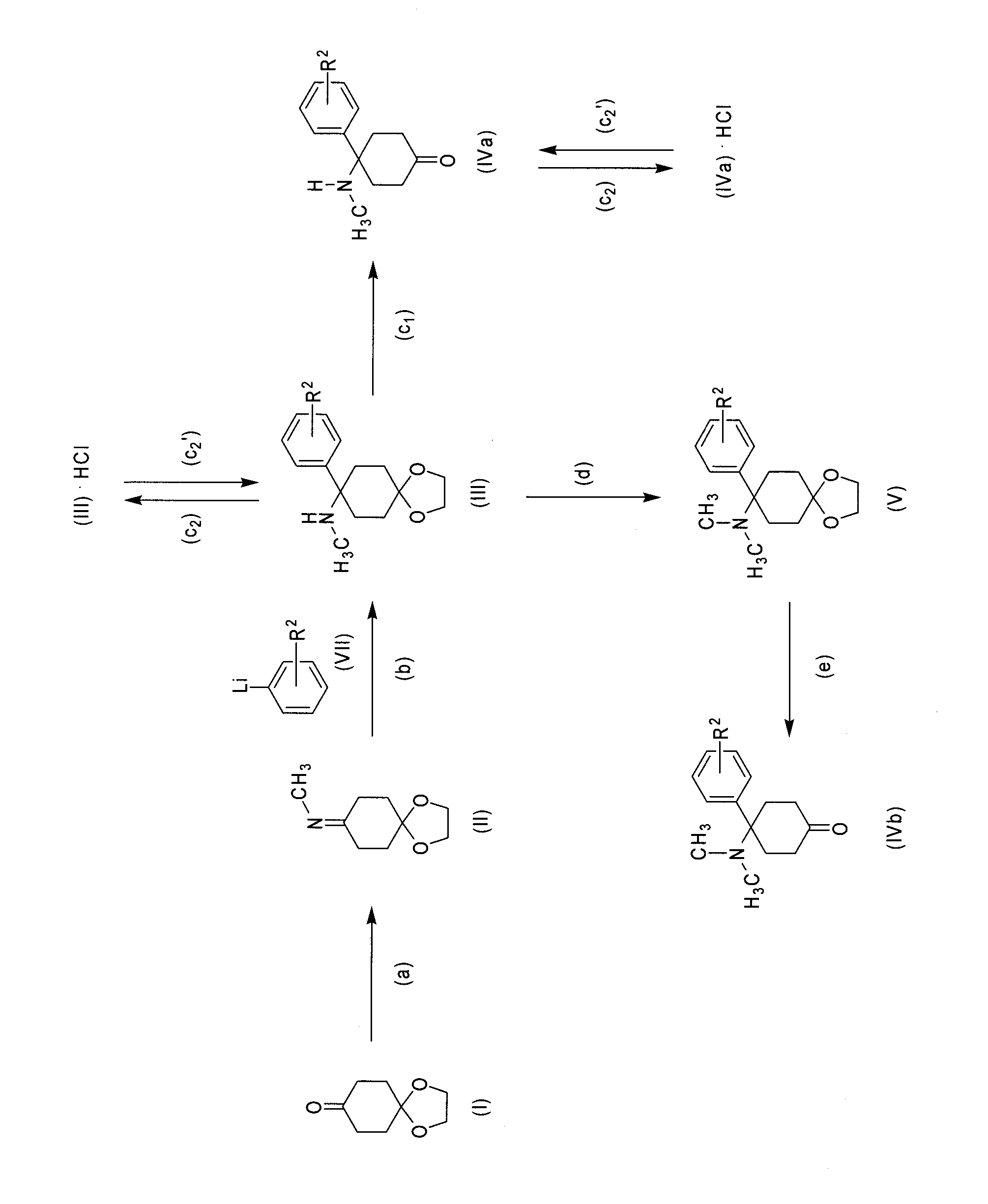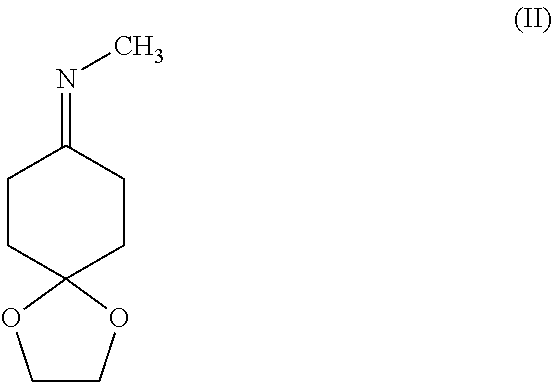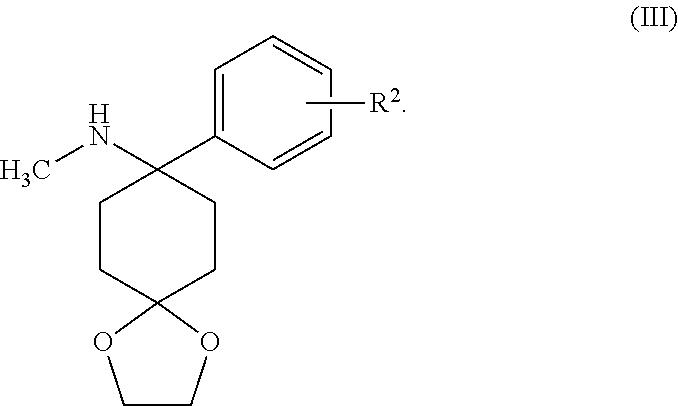Method for Synthesizing Substituted Aminocyclohexanone Compounds
a technology of aminocyclohexanone and derivatives, which is applied in the field of synthesizing substituted aminocyclohexanone derivatives, can solve the problems of disadvantageous use of cyanide salts or azide salts, and commercial production
- Summary
- Abstract
- Description
- Claims
- Application Information
AI Technical Summary
Benefits of technology
Problems solved by technology
Method used
Image
Examples
example 1
[0092]4-(dimethylamino)-4-phenyl-cyclohexanone
a) N-(1,4-dioxaspiro-[4,5]-decan-8-yliden)-methanamine
[0093]Synthesis of the Imine
[0094]Cyclohexane dion monoethylene ketal (50 g, 0.32 mol) was mixed with methylamine solution (8 M in ethanol, 100 ml, 0.80 mol) and then with ethanol (100 ml). The batch was stirred for 2-24 h at room temperature. The ethanol was distilled off at 40-45° C. at reduced pressure.
[0095]Yield: 98-100%
b) N-methyl-8-phenyl-1,4-dioxaspiro[4.5]decan-8-amine
[0096]Addition of phenyllithium to the Imine Formed under a)
[0097]N-(1,4-dioxaspiro-[4,5]-decan-8-yliden)-methanamine (43 g, 0.25 mol) was dissolved in dibutyl ether (75 ml) and added at room temperature (15-32° C.) to a solution of phenyllithium in dibutyl ether (1.8 M, 149 ml, 0.27 mol). The batch was stirred at room temperature for 1 h. A saturated ammonium chloride solution (60 ml) was then added. The organic phase was concentrated at 75° C. The remaining raw product was used in the next step without purific...
example 2
[0103]4-(methylamino)-4-phenyl-cyclohexanone
Addition of phenyllithium to the Imine Formed in Accordance with Example 1a)
[0104]N-(1,4-dioxaspiro[4,5]-decan-8-yliden)-methanamine (43 g, 0.25 mol) was dissolved in dibutyl ether (75 ml) and added at room temperature (15-32° C.) to a solution of phenyllithium in dibutyl ether (1.8 M, 149 ml, 0.27 mol). The batch was stirred at room temperature for 1 h.
Processing and Simultaneous Cleaving of the Ketal Function
[0105]300 ml of 8% hydrochloric acid were then added dropwise and stirred for 1 hour at 65° C. The organic phase was separated. The batch was cooled and alkalised with NaOH solution at 15-25° C. to pH≧12. It was extracted with 3*100 ml 2-methyltetrahydrofuran and the purified organic phases were concentrated at 45° C. at reduced pressure (<10 mbar).
Conversion into the Hydrochloride
[0106]The residue was taken up in 1.5 times the amount of isopropanol and gassed with hydrogen chloride. It was stirred for up to 16 h at 5-25° C. The prec...
PUM
 Login to View More
Login to View More Abstract
Description
Claims
Application Information
 Login to View More
Login to View More - R&D Engineer
- R&D Manager
- IP Professional
- Industry Leading Data Capabilities
- Powerful AI technology
- Patent DNA Extraction
Browse by: Latest US Patents, China's latest patents, Technical Efficacy Thesaurus, Application Domain, Technology Topic, Popular Technical Reports.
© 2024 PatSnap. All rights reserved.Legal|Privacy policy|Modern Slavery Act Transparency Statement|Sitemap|About US| Contact US: help@patsnap.com










